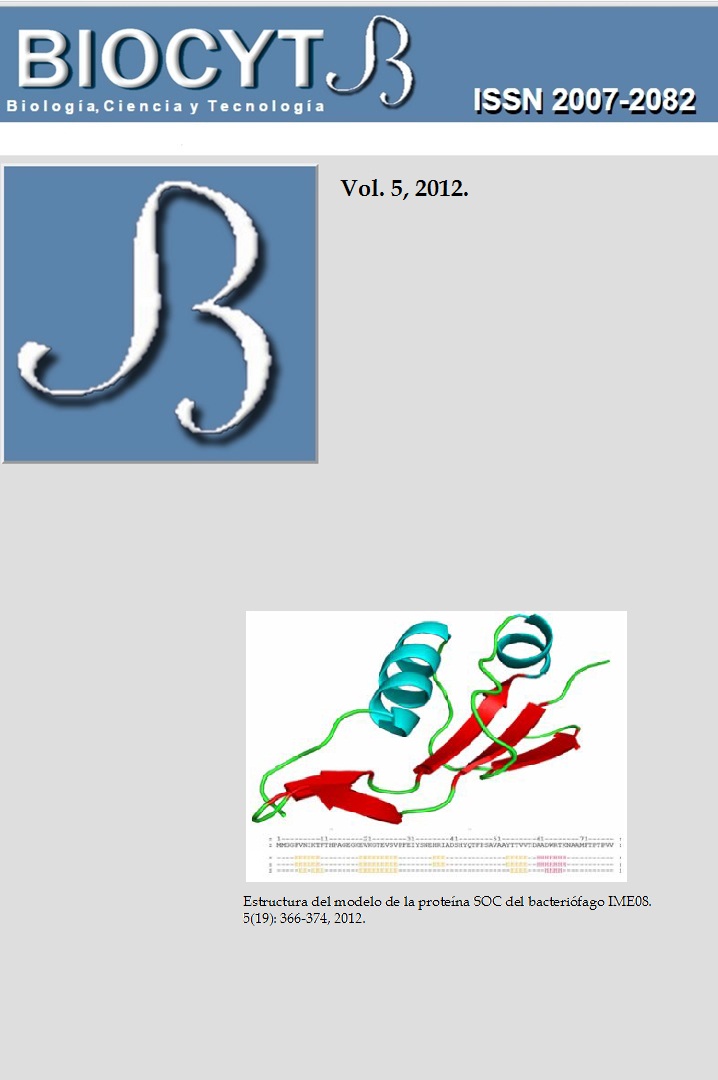DISTRIBUTION OF TRIATOMINES (HETEROPTERA: REDUVIIDAE) ASSOCIATED WITH HUMAN HABITATION AND POTENTIAL RISK AREAS IN SIX STATES OF THE MEXICAN REPUBLIC
Contenido principal del artículo
Resumen
Chagas disease is a real public health problem in Latin America, caused by the flagellate protozoan
Trypanosoma cruzi and described by Carlos Chagas in 1909. T. cruzi is transmitted by bloodsucking
insects of the subfamily Triatominae which thrive in sylvatic, peridomestic, and domestic habitats,
being in the latter two a potential risk to public health because of their role as vectors. We review the
distribution of triatomines associated with human habitation and their natural infection with T. cruzi
from the states of Aguascalientes, Chiapas, Guerrero, Jalisco, Michoacán, and Oaxaca. Based on
samples received in the Laboratory of Entomology of the Institute of Epidemiological Diagnosis and
Reference (InDRE-SSA) during the period 2006 to 2010, distribution maps and stratification of potential
areas of risk were made. A total of 1910 specimens of seven species of triatomines were identified.
Triatoma barberi, Meccus longipennis and M. pallidipennis were the species with the highest rate of
infection with T. cruzi; M. pallidipennis and T. dimidiata were the most widely distributed species.
Trypanosoma cruzi and described by Carlos Chagas in 1909. T. cruzi is transmitted by bloodsucking
insects of the subfamily Triatominae which thrive in sylvatic, peridomestic, and domestic habitats,
being in the latter two a potential risk to public health because of their role as vectors. We review the
distribution of triatomines associated with human habitation and their natural infection with T. cruzi
from the states of Aguascalientes, Chiapas, Guerrero, Jalisco, Michoacán, and Oaxaca. Based on
samples received in the Laboratory of Entomology of the Institute of Epidemiological Diagnosis and
Reference (InDRE-SSA) during the period 2006 to 2010, distribution maps and stratification of potential
areas of risk were made. A total of 1910 specimens of seven species of triatomines were identified.
Triatoma barberi, Meccus longipennis and M. pallidipennis were the species with the highest rate of
infection with T. cruzi; M. pallidipennis and T. dimidiata were the most widely distributed species.
Detalles del artículo
Cómo citar
Benítez-Alva, J. I., Huerta, H., & Téllez-Rendón, J. L. (2020). DISTRIBUTION OF TRIATOMINES (HETEROPTERA: REDUVIIDAE) ASSOCIATED WITH HUMAN HABITATION AND POTENTIAL RISK AREAS IN SIX STATES OF THE MEXICAN REPUBLIC. BIOCYT Biología Ciencia Y Tecnología, 5. https://doi.org/10.22201/fesi.20072082.2012.5.76093
